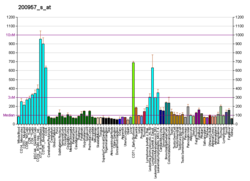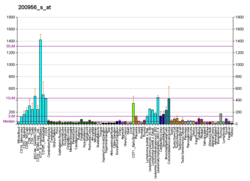
Transcriptional repressor CTCF also known as 11-zinc finger protein or CCCTC-binding factor is a transcription factor that in humans is encoded by the CTCF gene. CTCF is involved in many cellular processes, including transcriptional regulation, insulator activity, V(D)J recombination and regulation of chromatin architecture.

P300/CBP-associated factor (PCAF), also known as K(lysine) acetyltransferase 2B (KAT2B), is a human gene and transcriptional coactivator associated with p53.
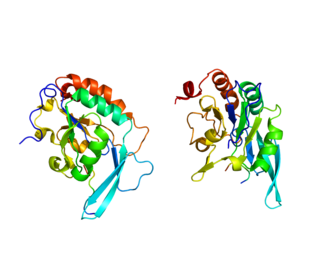
DNA-directed RNA polymerase II subunit RPB1, also known as RPB1, is an enzyme that is encoded by the POLR2A gene in humans.

Histone-binding protein RBBP4 is a protein that in humans is encoded by the RBBP4 gene.

Methyl-CpG-binding domain protein 2 is a protein that in humans is encoded by the MBD2 gene.
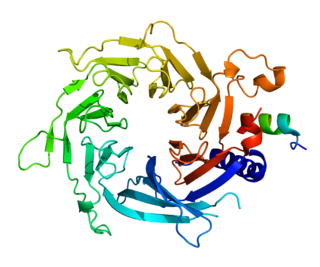
Histone-binding protein RBBP7 is a protein that in humans is encoded by the RBBP7 gene.

SWI/SNF-related matrix-associated actin-dependent regulator of chromatin subfamily B member 1 is a protein that in humans is encoded by the SMARCB1 gene.

Histone acetyltransferase KAT2A is an enzyme that in humans is encoded by the KAT2A gene.

General transcription factor IIH subunit 4 is a protein that in humans is encoded by the GTF2H4 gene.

Transcription initiation factor TFIID subunit 2 is a protein that in humans is encoded by the TAF2 gene.

Eukaryotic translation initiation factor 3 subunit A (eIF3a) is a protein that in humans is encoded by the EIF3A gene. It is one of the subunits of Eukaryotic initiation factor 3 (eIF3) a multiprotein complex playing major roles in translation initiation in eukaryotes.

FACT complex subunit SPT16 is a protein that in humans is encoded by the SUPT16H gene.

Mediator of RNA polymerase II transcription subunit 21 is an enzyme that in humans is encoded by the MED21 gene.

Remodeling and spacing factor 1 is a protein that in humans is encoded by the RSF1 gene.

General transcription factor IIH subunit 1 is a protein that in humans is encoded by the GTF2H1 gene.

Histone H2A type 2-B is a protein that in humans is encoded by the HIST2H2AB gene.

General transcription factor IIF subunit 1 is a protein that in humans is encoded by the GTF2F1 gene.
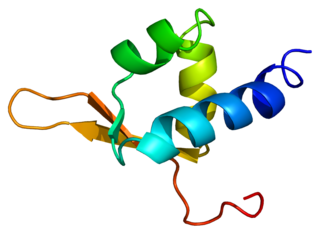
General transcription factor IIF subunit 2 is a protein that in humans is encoded by the GTF2F2 gene.
FACT is a heterodimeric protein complex that affects eukaryotic RNA polymerase II transcription elongation both in vitro and in vivo. It was discovered in 1998 as a factor purified from human cells that was essential for productive, in vitro Pol II transcription on a chromatinized DNA template.

High mobility group nucleosome-binding domain-containing protein 3 is a protein that in humans is encoded by the HMGN3 gene.




